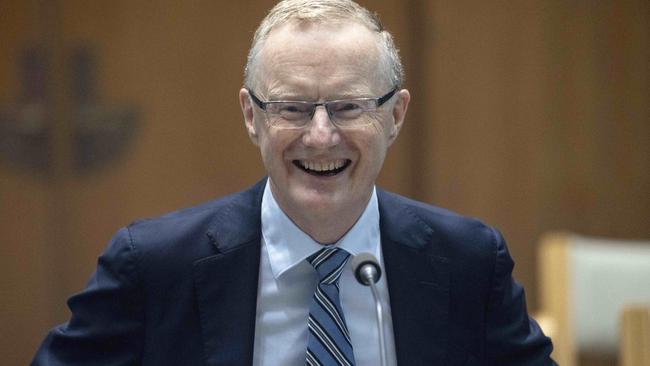Jobs rate of 1970s needed before pay picks up: RBA head
The key jobless measure would need to fall below 4 per cent before workers get meaningful pay rises, RBA says.

Reserve Bank governor Philip Lowe believes unemployment may need to fall to levels last seen in the early 1970s before workers get meaningful pay rises, as he said a “durable” post-COVID recovery would require a revival in business investment.
Dr Lowe said it was “not inconceivable” that the key jobless measure would need to fall below 4 per cent before wages grew sustainably by 3 per cent or more – more than double the current rate. He said this was a precondition for the central bank to achieve its inflation target, and for rates to lift from their historic low of 0.1 per cent.
Unemployment touched 4 per cent in 2008, but was last below that level in August 1974, when it was 2.7 per cent, according to the Australian Bureau of Statistics.
“This is the core of our strategy: to get the unemployment rate down, create a tight labour market, and for (employers) to have to compete more aggressively, including pay workers more to get them,” Dr Lowe said.
“That’s the strategy for many countries. Unfortunately we are a long way away, but we are going to stay the course until we get there.”
The jobless measure sits at 6.4 per cent now, and the RBA predicts it will end the year at 6 per cent. The central bank’s latest set of forecasts from February have unemployment falling to 5.25 per cent by mid-2023.
Dr Lowe’s comments to a business forum in Sydney poured cold water on growing expectations among investors that the central bank would be forced to lift rates as soon as 2022 in response to the unexpectedly rapid V-shaped economic recovery here and abroad.
“Over the past couple of weeks market pricing has implied an expectation of possible increases in the cash rate as early as late next year and then again in 2023,” Dr Lowe said.
“This is not an expectation that we share.”
The RBA chief said “the journey back to full employment and inflation consistent with the target is likely to be a long one”, and that it remained “very likely” that the cash rate target would stay at 0.1 per cent “until at least 2024”.
“Even before the pandemic, wages were increasing at a rate that was not consistent with the inflation target being achieved. Then the pandemic resulted in a further step-down. This step-down means that we are a long way from a world in which wages growth is running at 3 per cent plus.”
“Predicting how long it will take is inherently difficult,” he said. “Our judgment is that we are unlikely to see wages growth consistent with the inflation target before 2024”.
Dr Lowe said “the full recovery of our economy requires a further lift in business investment”.
“Stronger investment will also boost our productivity and provide a firm basis for stronger growth in nominal and real wages,” he said.
A 12 per cent jump in consumption over the second half of 2020 has underpinned the post-COVID recovery, Dr Lowe said, but “investment is a different story”.
A “welcome” pick-up in business spending in the December quarter has still left investment 7 per cent below where it was before the crisis, and over 10 per cent below where the RBA had forecast it would be at the start of last year, he said.
“A durable recovery from the pandemic requires a strong and sustained pick-up in business investment.”
“Not only would this provide a needed boost to aggregate demand over the next couple of years, but it would also help build the capital stock that is needed to support future production.”
Dr Lowe said there was “no magic ingredient for boosting business investment”, but that “a good starting point” was firms “having confidence that the economy will grow and that there will be demand for their products and services”.
To that list, he added stable and predictable regulatory regimes, access to reasonably priced finance, and the capacity of businesses to generate new ideas.




To join the conversation, please log in. Don't have an account? Register
Join the conversation, you are commenting as Logout